Dell EqualLogic PS6210XV review
Dell’s next generation of EqualLogic IP SAN disk arrays are injected with features that provide a big boost in performance.
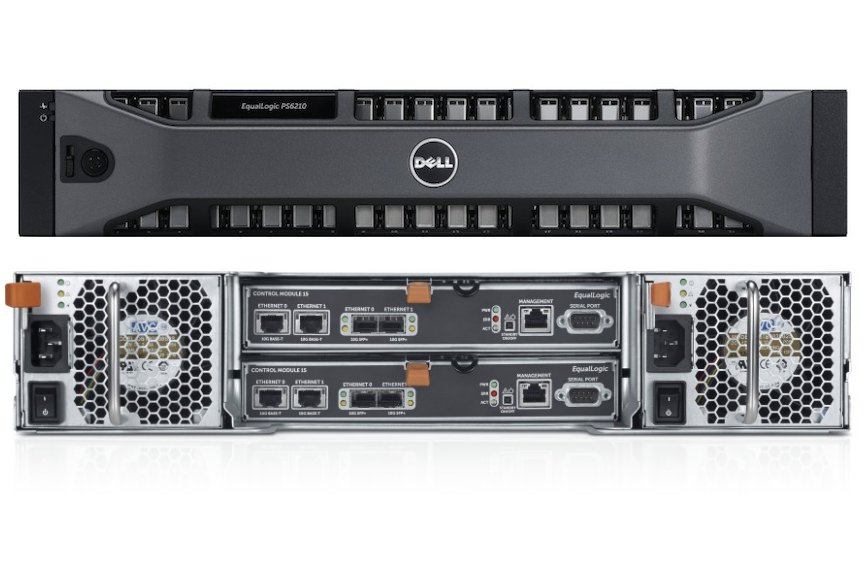

Dell’s EqualLogic IP SAN arrays get better with every generation. Build quality of the PS6210XV is excellent, it’s easy to manage/expand and the new controllers deliver unbeatable performance.
-
+
Swift deployment; Good value; Top performance; High capacity and expansion
-
-
Nothing of note

Showing off their redesigned controllers, Dell's EqualLogic PS6210 arrays aim to deliver major improvements in performance. Dell has increased storage options, offering up a choice between 2.5in or 3.5in drives, a mix of SSDs and HDDs and a high performance flash only version.
In this exclusive review we look at the PS6210XV which is a 2U rack system with 24 300GB hot-swap 15k SAS SSF drives. The new controllers are 10GbE only there won't be a PS6200 Gigabit version.
Their Broadcom XLP MIPS engine runs the refreshed 64-bit Dell EqualLogic Array Software 7 and cache memory has been quadrupled to 16GB of DDR3. The cache to flash feature writes the entire cache contents to flash memory in the event of a power failure. The only difference is the new controllers use a Li-ion battery as the capacitors in the previous models don't have enough juice to power the larger cache contents.
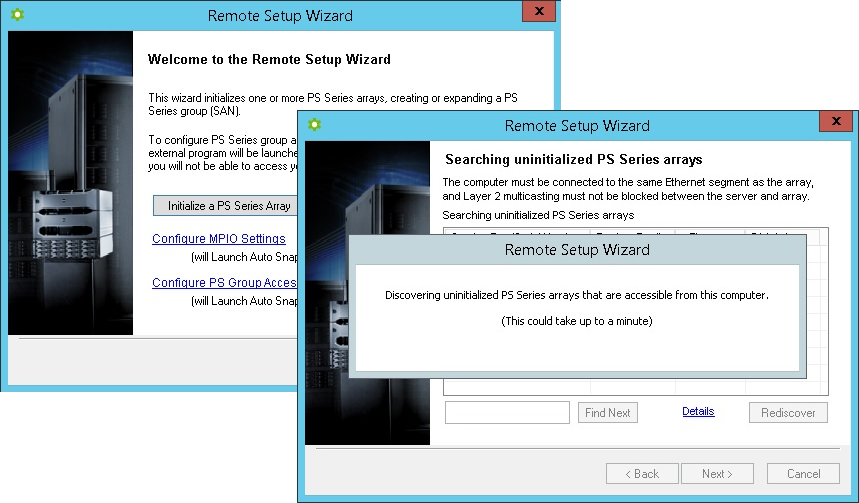
The Remote Setup Wizard makes light work of array discovery and initial deployment
Port permutations and expansion
The PS6210 controllers have dual copper and SFP+ fibre 10GbE ports. All four are enabled as standard and you can use copper or fibre but not a mixture.
The controllers are both active and employ Dell's vertical port failover. If a port on the primary controller or your switch fails then it will automatically use the corresponding port on the secondary controller.
The primary controllers' ports are grouped under a virtual IP address and load balanced. As you add more appliances to a group, their network ports will join the virtual IP address so increasing available bandwidth.
Expansion potential is massive as up to sixteen appliances can be placed in a group and presented to the network as a logical storage pool. Each appliance looks after its own RAID arrays but the storage on all members is made available as a single entity.
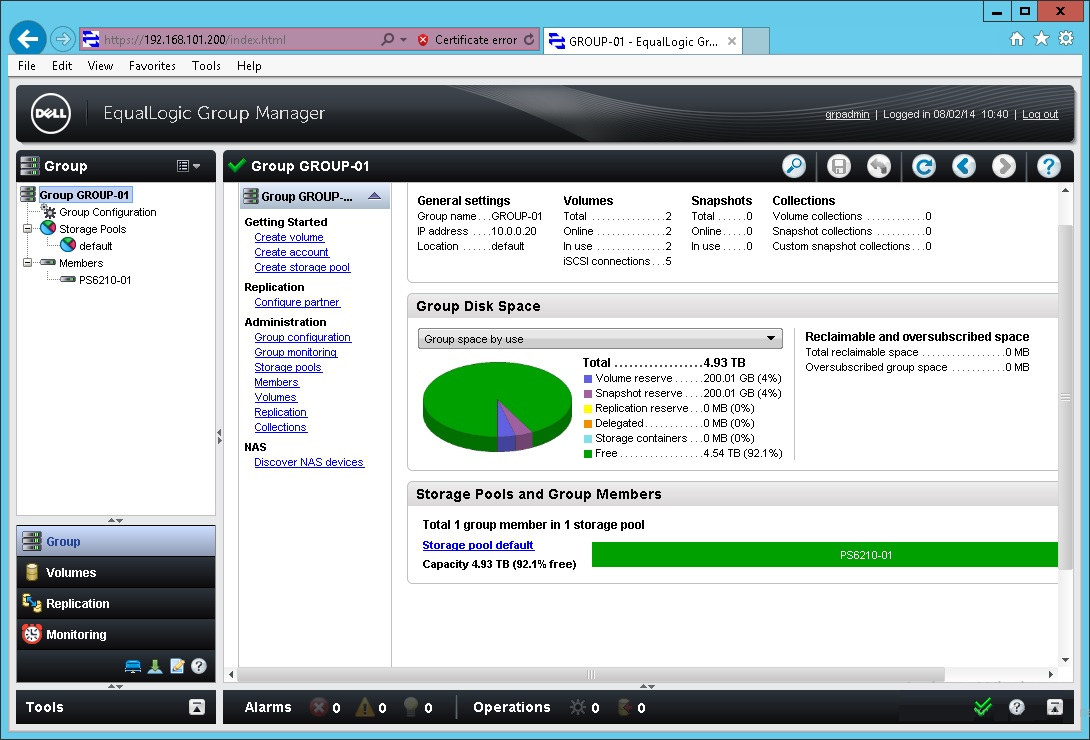
The Group Manager provides access to all storage features plus wizards for pool and volume creation
Installation, volumes and watermarks
Installation is a cinch as Dell's Remote Setup Wizard hunts down uninitialised arrays and the Group Manager console provides easy access to all functions. Management security is tight as Active Directory is supported for role based access.
The redesigned volume creation wizard helps create storage pools. Thin provisioning is configured during volume creation and you decide how much physical space to start with.
Three watermarks are applied where the minimum size is 10 per cent. The second watermark is set to a percentage of used space and when reached, the system will throttle back I/O performance to give you time to increase the volume size.
If the critical watermark is breached, the system automatically places the volume offline. The arrays also support 512Byte and 4KB hard disk sectors which can be selected during volume creation.
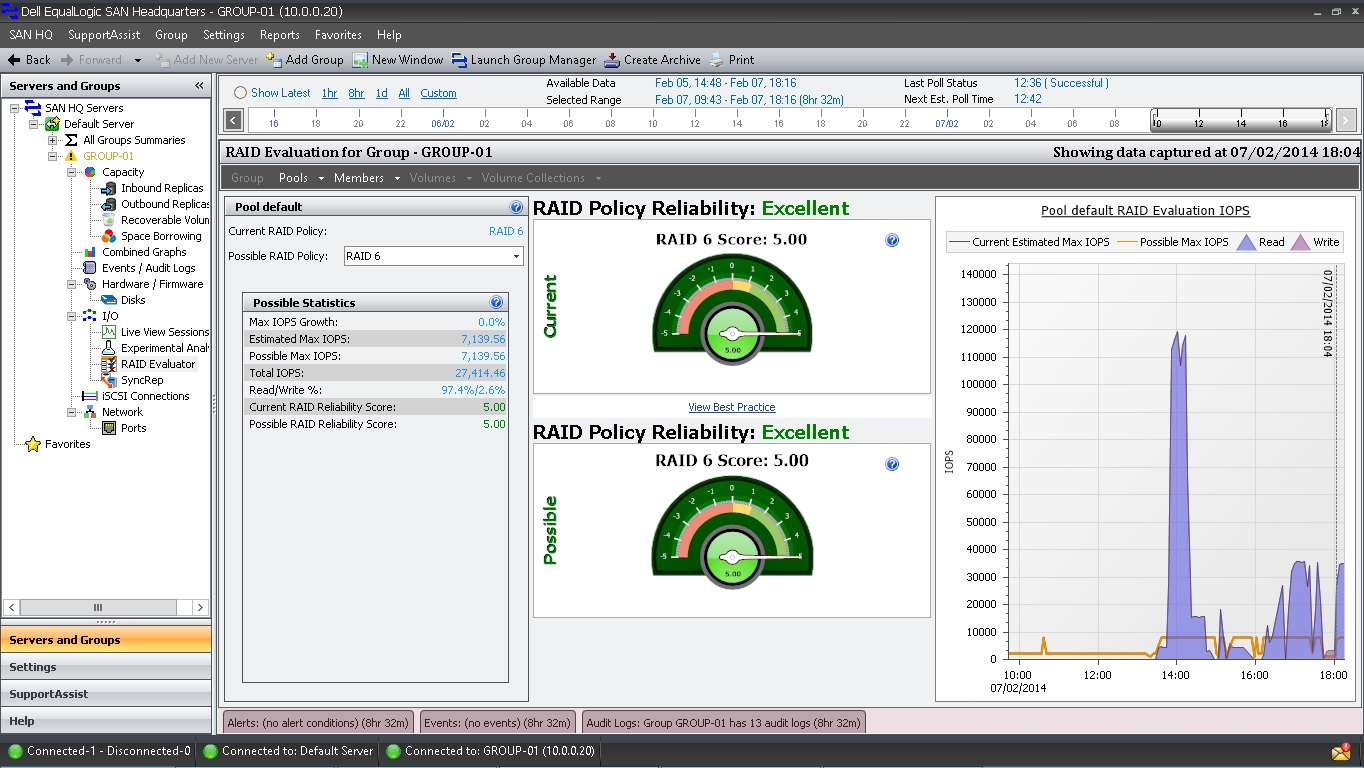
Dell's SAN HQ is included as standard and provides an excellent range of array monitoring tools
Features
The new volume re-thinning feature avoids capacity wastage. For example, on a server system using a virtual volume, if you delete files on the volume the Group Manager will immediately reclaim the space.
Access control policies now allow you to define which hosts are allowed to access specific volumes. It's a simple process as you create policy groups containing multiple hosts, define access restrictions based on CHAP authentication, iSCSI initiator name or IP address and assign the policy during volume creation.
There are no extra licenses required for snapshots as the price includes the full 512 per volume and 10,000 per group. The new snapshot borrowing feature helps when space gets tight as if a scheduled volume snapshot can't occur due to lack of available capacity, the system will temporarily borrow space from the pool.
The arrays offer one-way replication to another group, bi-directional replication between groups or replication of multiple groups to a central location. Synchronous replication mirrors a volume to another in the same group regardless of the physical location of the member appliances.
Dell's SAN HeadQuarters 3.0 comes as standard and is designed to centrally monitor multiple groups. It provides a wealth of status information and this version adds automated support case creation and tracking which links in with Dell's SupportAssist service.
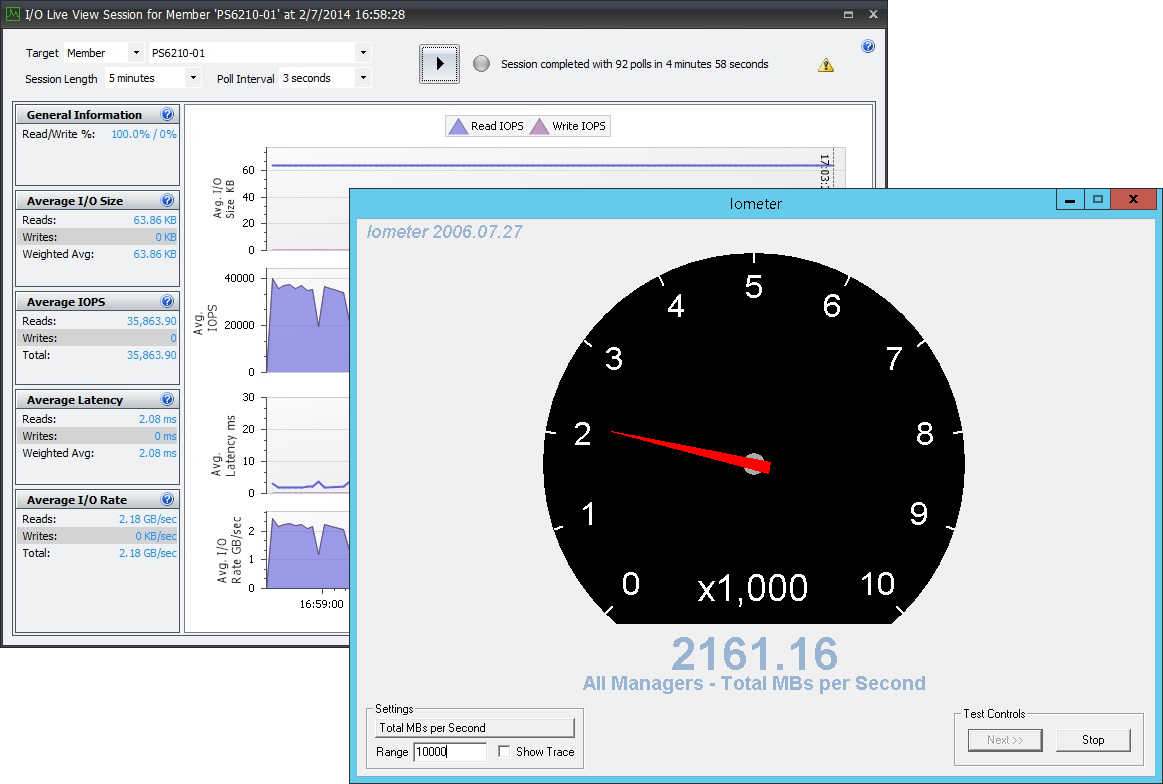
Our lab tests show the new controllers can deliver an impressive raw performance
IOPS for everyone
For testing we used a Dell PowerEdge R720 server with dual 2.6GHz E5-2670 Xeons, 192GB of DDR3, a dual port fibre 10-Gigabit card and Windows Server 2012 R2. We logged the server's iSCSI initiator onto the group's virtual IP address to enable load balancing and connected it to a pair of 100GB virtual volumes.
We used eight Iometer disk workers with four assigned to each volume. With 64KB sequential read transfer requests, we saw an impressive raw read throughput of around 2,156MB/sec which equates to 16.8Gbits/sec.
To test maximum IOPS we changed the Iometer block size to 4KB and saw a very high reading of over 200,000 IOPS. For general SQL database performance testing, we used 256 outstanding I/Os, a 16KB block size, 66 per cent read, 34 per cent write and a 100 per cent random distribution and saw a respectable 5,700 IOPS.
Conclusion
The EqualLogic PS6210XV delivers plenty of new features and the all-in price means no hidden costs. It's very simple to deploy and our performance tests show the new controllers deliver a big boost in performance over the previous generation.
Verdict
Dell’s EqualLogic IP SAN arrays get better with every generation. Build quality of the PS6210XV is excellent, it’s easy to manage/expand and the new controllers deliver unbeatable performance.
Chassis: 2U rack
Power: 2 x 700W hot-plug PSUs
Storage: 24 x 300GB 15k SAS 2 SFF hot-swap hard disks
Two hot-plug controllers each with the following:
CPU: Broadcom XLP MIPS
Cache: 16GB DDR3 with cache to flash
RAID: 6, 10, 50
Network: 2 x 10GbE SFP+, 2 x 10GBaseT, 10/100 management port
Management: CLI, web browser, Dell SAN HeadQuarters
Warranty: 3 year on-site NBD
Get the ITPro daily newsletter
Sign up today and you will receive a free copy of our Future Focus 2025 report - the leading guidance on AI, cybersecurity and other IT challenges as per 700+ senior executives
Dave is an IT consultant and freelance journalist specialising in hands-on reviews of computer networking products covering all market sectors from small businesses to enterprises. Founder of Binary Testing Ltd – the UK’s premier independent network testing laboratory - Dave has over 45 years of experience in the IT industry.
Dave has produced many thousands of in-depth business networking product reviews from his lab which have been reproduced globally. Writing for ITPro and its sister title, PC Pro, he covers all areas of business IT infrastructure, including servers, storage, network security, data protection, cloud, infrastructure and services.
-
 ‘Phishing kits are a force multiplier': Cheap cyber crime kits can be bought on the dark web for less than $25 – and experts warn it’s lowering the barrier of entry for amateur hackers
‘Phishing kits are a force multiplier': Cheap cyber crime kits can be bought on the dark web for less than $25 – and experts warn it’s lowering the barrier of entry for amateur hackersNews Research from NordVPN shows phishing kits are now widely available on the dark web and via messaging apps like Telegram, and are often selling for less than $25.
By Emma Woollacott Published
-
 Redis unveils new tools for developers working on AI applications
Redis unveils new tools for developers working on AI applicationsNews Redis has announced new tools aimed at making it easier for AI developers to build applications and optimize large language model (LLM) outputs.
By Ross Kelly Published
-
 Google layoffs continue with "hundreds" cut from Chrome, Android, and Pixel teams
Google layoffs continue with "hundreds" cut from Chrome, Android, and Pixel teamsNews The tech giant's efficiency drive enters a third year with devices teams the latest target
By Bobby Hellard Published